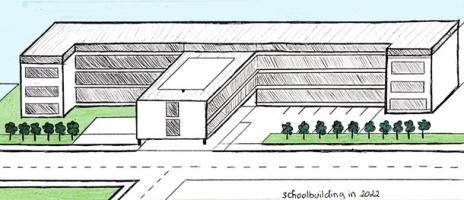„All about Seebooker: Past – Present – Future. Celebrating 150 Years of Education“ – unter diesem Titel ist der nunmehr achte Band der „Literatur aus dem Seebacher“-Reihe heuer erschienen und der Name ist Programm: In dieser Special Edition anlässlich des 150 Jahre- Jubiläums unserer Schule sind englische Texte und selbst gezeichnete oder eigens designte Bilder aus der Feder der Schüler*innen der 5d zu bestaunen. Zwei Quiz testen euer Wissen über das Seebacher und seine Geschichte. Also ab in die Schulbibliothek and enjoy browsing through our booklet!
5D mit Mag. Johanna Vormayr
Leseprobe:
Seebacher History by Juli Nikolaus
Seebacher wasn’t always called by that name… and it wasn’t always in the place, where it is today… it took a lot of time and work to get it where it stands now.
On November 24th in 1872 Matthias Wretschko wrote an article in the “Tagespost” about female education and the importance of it, but society back then didn’t accept the article and couldn’t even imagine women getting a good and decent education like men. In February 1873, the topic came up again and this time Matthias Wretschko appealed to the Styras women to establish a private girls’ high school. When it worked, they discovered the perfect place, Neutorplatz 4, for this school and got the approval for the “Mädchen Lyceum”. On October 11th in 1873 the first class started. The news about this new school travelled fast – so fast that in 1874 the Hungarian education minister came to visit the school. Soon the downside of becoming popular came up. The school grew, more and more students wanted to go there and in 1876 the school moved to the Palais Kuhenberg (which is now a museum). When the school settled in, it was very great, but the girls there didn’t have the same education as the boys did. Boys could go to unis when they finished school and get their degree, but girls didn’t get degrees when they finished school. They were only considered “better housewives” than before. In 1883, emperor Franz Josef visited the high school and donated a lot of money. Because of the fact that the school was private, only privileged girls could afford to go there. So, when the school was transferred to the administration of the city Graz in 1885, it was a big relief. In 1902, the girls at the school had the chance to take a final exam (Matura), which had not been possible for women until then. The school was taken out of the city’s’ administration in 1910, which wasn’t that great. Anyhow, in the same year it was approved that girls could go to school for eight years. Before that they only had six years of education. Until 1924 the school was just a normal school and then it was transformed into a “Reform-Real gymnasium”. Three years later, the school got public rights. After the school began to teach a second foreign language besides Latin in 1933, it was renamed to “Franz-Ferdinand-Oberlyzeum der Landesstadt Graz” on the July 8th in 1935. The reason why it was named after the heir to the throne, who was murdered in 1914, is that the school was situated in his place of birth. In the years of 1935/36 the school had their first female principal and three years later the magistrate changed the to “Städtisches Oberlyzeum Graz”. When the German troops came to Austria, all the confessional private schools were dissolved, and the school system was adjusted to fit the Nazis expectations. The Nazis needed the Palais Kuhenburg, so they moved the school to a former confessional school building, the Ursulinen, together with another school (Schulschwestern). But that situation didn’t last long, because soon the Nazis needed the building for a lazarette, because of the war, so they brought the school briefly to the Schulschwestern-building on the Kaiser-Franz-Josef-Kai. In 1941 they then moved it to the Sacré Coeur in Petersgasse 1 and renamed it “Königin-Louisen-Schule”. But soon after that in March 1945, the school was cancelled for nearly seven months because of the war. After the war, the school was renamed again to “Erstes Bundesrealgymnasium für Mädchen Graz” and it was moved to the Lichtenfels in Lichtenfelsgasse 3-5. The special thing about the education then was that the classes of boys and the classes girls were alternating – one in the morning, the other in the afternoon. In 1963, it got the name “Bundesrealgymnasium und Bundesgymnasium für Mädchen. After some time, the girls-school started looking for another option, because they realised that this wasn’t best situation and that much more space was needed. So, on May 27th in 1964 the founding stone for the new school building in the Seebachergasse was placed. Three years later the building was finished, and classes began in Seebachergasse 11 on March 29th in 1967, where the classes were continued as “Gymnasium und Realgymnasium”. Until 1978 the school was an only girls’ school. Then in the years 1978/79, two mixed classes with boys and girls were founded. Since then, the school was renovated, got a sports-club, and got a third floor.
I think that we’re not only celebrating our school’s anniversary. In my opinion, we’re celebrating all the people who made it possible that we’re here today and carried the school through tough times.

